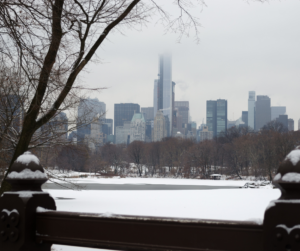As winter takes hold, the risk of frozen pipes looms. Keep an eye out for these five telltale signs that your pipes might be freezing, and discover practical tips on how to thaw them before the chill turns into a plumbing headache.
How to Identify Frozen Pipes
1. Reduced Water Flow
If your faucets or showerheads are dispensing water at a trickle rather than a steady flow, it could be a sign of frozen pipes.
2. Strange Odors
Frozen pipes can cause a blockage, leading to unpleasant smells emanating from your drains. This could indicate that wastewater is not properly flowing through the pipes.
3. Frost on Exposed Pipes
Inspect exposed pipes in areas like the basement, crawlspace, or under the sink. If you notice frost on the exterior of the pipes, it’s a clear indication that they are frozen.
4. Unusual Sounds
Pipes under strain from freezing might produce strange noises, such as banging or clanking. These sounds are a result of the expanding ice within the pipes.
5. Visible Damage
Cracks or bulges in pipes are visible signs of potential freezing. Check your pipes regularly for any visible damage, and address issues promptly.

How to Thaw Frozen Pipes
1. Locate the Freeze
Identify the section of the pipe that is frozen. This is usually where you’ve observed the signs mentioned earlier.
2. Open Faucets
Turn on the faucet connected to the frozen pipe. This helps relieve pressure as the ice begins to melt.
3. Apply Heat
Use a hairdryer, heat lamp, or towels soaked in hot water to apply heat to the frozen area. Start from the faucet end and work your way toward the blockage.
4. Warm the Space
Increase the ambient temperature in the room containing the frozen pipes. This can aid in the thawing process.
5. Seek Professional Help
If you’re unable to thaw the pipes or if there’s a risk of a burst pipe, it’s crucial to call a professional plumber for assistance.
Remember, prevention is key. Insulate pipes in vulnerable areas, keep a consistent thermostat setting, and allow faucets to drip during extremely cold weather to prevent freezing. Stay vigilant, and address frozen pipes promptly to avoid potential water damage to your home.
________________________________________________________________________________________
Opinions expressed in this article are solely the author’s opinion. Not intended to provide the reader with legal or any other professional advice. Should you need advice or opinion, consult with a qualified professional to address your specific needs.